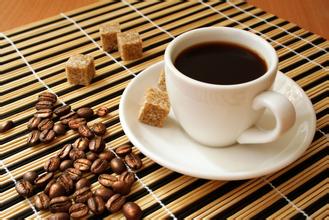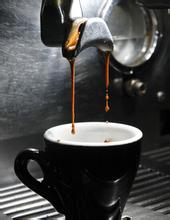Key points of coffee knowledge: explore where the real coffee alcohol aroma comes from?
To coffee aficionados like me, there is no smell that can compare to the smell of coffee fields in bloom. Coffee tree's first flowering period is about three years, white flowers for the five-petal tubular flowers, floating with a faint jasmine fragrance, inflorescences dense and arranged in clusters. After two or three days of flowering, it will wither and begin to bear fruit after a few months. In Yunnan, this period coincides with the beginning of the rainy season, usually in March or April, when the weather is drier and temperatures begin to rise, and rain breaks open sleeping buds. For the upcoming coffee ripening season, these open coffee flowers have great significance.

90-95% of Arabica coffee trees are self-pollinated: pollen pollinating flowers comes from the same plant, and berries begin to develop immediately thereafter. The fruit is a stone fruit, about 1.5 cm in diameter, which changes from green to yellow or red with maturity, depending on the variety. Because of the staggered timing of flowering, you will see red and green berries hanging from the trees at the same time. Coffee fruit contains two seeds, namely coffee beans. The two beans stand upright facing each other on one side of their plane.

The time it takes for coffee berries to ripen from flowering is influenced by several factors, including coffee varieties, climatic conditions, and agronomic practices. For Arabica coffee, it takes about 6-9 months, which means that it can be harvested from this time in Yunnan. The harvest season in the coffee belt begins in October (September in warmer regions) and continues until February. While harvesting can be mechanized when conditions permit, most countries still harvest coffee by hand.

Manual picking is a labor-intensive operation with high cost. Therefore it is mainly used for picking high-quality Arabica coffee beans. This is only the first step in the production of high-quality coffee, and it is also the method of picking coffee in Yunnan. Fresh fruits need to be peeled on the day of picking, followed by fermentation, washing and drying to ensure that coffee beans maintain the purest original mellow aroma and taste.

When high-quality coffee beans are picked, the most important steps in making it gourmet coffee are roasting and blending. Coffee beans from different origins therefore present different flavors of fragrance, dryness, alcohol, bitterness and acidity. A master baker must have the temperament of an artist and the rigor of a scientist. This ensures that the roasting process carbonizes the sugar and other carbohydrates in the coffee, resulting in the well-known coffee fat, producing a good coffee of high quality and consistent style. Technically, this subtle chemical isn't really fat (because it dissolves in water), but it is the source of coffee's aroma. Professional coffee is generally roasted in small batches. The different degrees of roasting of the coffee beans determine how the coffee beans will ultimately present flavor. The aroma extracted from coffee beans is directly proportional to the roasting time. The deeper the roasting degree, the less caffeine and acidity. The deeper the roast, the more burnt you taste and the lighter the coffee beans themselves.
Source: Wave Coffee Academy
Important Notice :
前街咖啡 FrontStreet Coffee has moved to new addredd:
FrontStreet Coffee Address: 315,Donghua East Road,GuangZhou
Tel:020 38364473
- Prev

Knowledge points for choosing coffee beans: 10 factors to consider when choosing raw coffee beans
The raw bean seller is mainly responsible for grading the coffee beans before selling them to the coffee bean merchant. After the grading is completed, premium coffee beans and boutique coffee beans will be selected, although they will have some defects but do not affect the coffee rating. These defects are not so serious, but they can also cause potential damage to the quality of coffee. Although Cupping is undoubtedly the most definite way to check coffee beans.
- Next

Espresso knowledge points: ESPRESSO roasting tips detailed operation introduction
Translated from Fresh Cup Magazine's Coffee Almanac,2003 June issue, pp. 36-40, Roasting for Espresso: Implications for Coffee Retailingby David Schomer. Introduction A few years ago, I took a very important coffee course to compare the differences between espresso and other immersion brewing methods (such as French pressure and trickling).
Related
- What is the meaning of lactic acid fermentation with coffee bean treatment?
- How to judge the state of foam by sound?
- How does the latte pull out the unicorn pattern? Come to get for a little trick to improve the flower pull!
- Will flower pulling affect the taste of the latte?
- Do you know the history of coffee?
- The difference between honey treatment and sun washing what is raisin honey treatment?
- What kind of milk can a novice use to make coffee foam to keep the foam longer? The correct method and skills of milking tutorial sharing
- Why do washed coffee beans taste sour? Flavor characteristics of washed Coffee
- Introduction to the skill of how to practice the size and height of water injection around the circle of hand-brewed coffee
- How do beginners practice coffee flower drawing from scratch?

